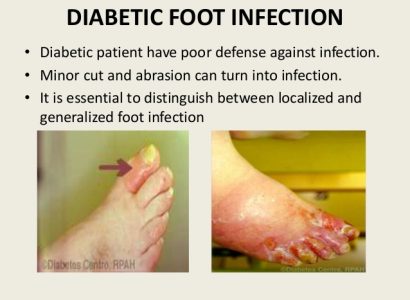https://www.ndfcclinic.com/gangrene-treatment-in-aurangabad/

Gangrene is the death of body tissue due to reduced blood flow or serious bacterial infection. It usually affects the hands and feet, including the toes and fingers. It can also occur in the muscles and organs inside the body, such as the gallbladder. Conditions that can damage blood vessels and disrupt blood flow, such as diabetes or hardened arteries (Atherosclerosis), increase the risk of gangrene. Treatment of gangrene may include antibiotics, oxygen therapy, and surgery to restore blood flow and remove dead tissue. The sooner gangrene is identified and treated, the better the chance of recovery. If found any symptoms regarding gangrene, visit Dr. Amit Naghate for Gangrene Treatment in Aurangabad
Causes
Causes of gangrene include:
Lack of Blood supply. Blood supplies the body with oxygen and nutrients. It also provides the immune system with antibodies to fight infection. Without a proper blood supply, cells cannot survive and tissues die.
Infection. An untreated bacterial infection can cause gangrene.
Traumatic injury. Gunshot wounds or crush injuries from car accidents can cause open wounds that allow bacteria to enter the body. If bacteria infect tissues and remain untreated, gangrene can occur.
Types of gangrene
Dry Gangrene: This type of gangrene involves dry and shriveled skin that looks brown to purplish-blue or black. Dry gangrene can develop gradually. It usually occurs in people who have diabetes or a blood vessel disease such as atherosclerosis.
Wet gangrene: Gangrene is called wet if bacteria have infected the tissue. Swelling, blisters, and a wet form are common features of wet gangrene. Wet gangrene can develop after severe burns, frostbite, or injury. It often occurs in people with diabetes who accidentally injure a toe or foot. Wet gangrene should be treated immediately as it spreads quickly and can be fatal.
Gas gangrene: Gas gangrene usually affects deep muscle tissue. The surface of your skin may look normal at first. As the condition worsens, the skin may turn pale and then turn to other colors, such as gray or purplish red. The skin may look bubbly. It may make a hoarse sound when you press on it due to the gas in the tissue.
Gas gangrene is usually caused by a bacteria called Clostridium perfringens bacteria to accumulate in an injury or surgical wound that has no blood supply. The bacterial infection produces toxins that release gas and cause tissue death. Like wet gangrene, gas gangrene is a life-threatening condition.
Internal Gangrene. Internal gangrene affects one or more organs, such as the intestines, gallbladder, or appendix. It occurs when blood flow to an internal organ is blocked. This can happen, for example, when the intestines protrude and twist through a weak area of muscle in the abdominal area (hernia). Untreated, internal gangrene can be fatal.
Fournier’s Gangrene. This type of gangrene involves the genitals. It usually affects men, but women can also have it. Infections in the genital area or urinary tract cause this type of gangrene.
Melanie’s gangrene. This is a rare type of gangrene. This is usually a complication of surgery. Painful skin lesions usually appear one to two weeks after surgery. Another name for this condition is progressive bacterial synergistic gangrene.
Treatment of gangrene
There are many options for gangrene treatment. Your provider will choose the best method or combination of methods for you based on the cause of your condition and how far it has progressed.
The treatment goals are
- Remove dead or infected tissue from your body.
- Prevent or treat the infection to prevent gangrene from spreading.
- Help improve your blood flow.
